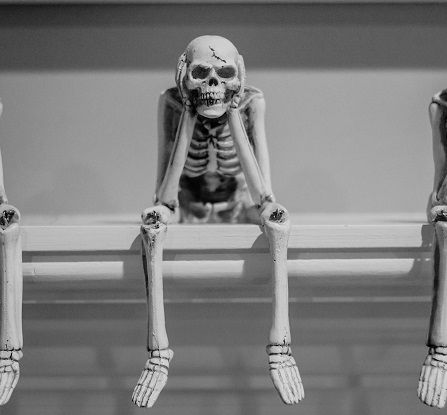Keeping Your People Moving In The Workplace …..
- Catherine Bentley
- Jun 29, 2020
- 3 min read

We are all too aware of the tendency towards ever more sedentary lifestyles and the affliction of modern day society, commonly known as the “sitting disease” – a metabolic syndrome and the ill-effects of this lifestyle.
A survey conducted by PR Newswire showed that, on average, Americans are sitting for an average of 13 hours a day and sleeping an average of 8 hours resulting in a sedentary situation of 21 hours per day. 86 % of American workers are sitting all day every day and to compound this, the tendency is also for people to spend time
Sitting for another 1 to 2 hours to watch TV
Gaming 1 to 2 hours
Lounging – including reading etc. 1 to 2 hours
Using home computer 1 to 2 hours
Research has shown the links between sedentary lifestyles and diabetes, several types of cancer, obesity and cardiovascular disease. Startlingly in this region, 1 in 5 UAE citizens are suffering from diabetes.
Clearly, this situation is alarming for the individual and is a motivator at a personal level for a change in lifestyle and behaviour.
But from a corporate perspective the case for radical review is equally compelling: The startling facts:
There is a 50 % reduced productivity amongst employees who do not take part in physical activity versus those who exercise regularly.
77% of productivity loss is due to health related factors
Currently, 90% of business leaders agree that wellness directly impacts employee performance and productivity. But here lies the conundrum … the increasingly competitive commercial environment means that more is being required of individuals and inevitably the working day and “sitting period” is extended.

As more and more is demanded, responsible organisations are looking for ways of mitigating the undeniable risks of a physically inactive workforce.
Against this background, we offer 3 top tips for employers to keep their teams moving in the workplace:
Tip Number 1 – Awareness
The first stage in any change process has to be fully understanding the need or rationale for change. Whilst the average individual will have a passive awareness that sedentary lifestyle is not good for them – the standard response is all too often that they don’t have time and the band-width to allocate to their fitness, health and wellbeing. This is where organisations can pro-actively work to highlight the risks associated with neglecting health and wellbeing. Lunchtime wellness information seminars, quick health and fitness checks and the dissemination of key information and advice are all very easy and inexpensive to implement.
Tip Number 2 – Group Fitness Motivation Programmes
It is widely acknowledged that participation in group exercise and fitness programmes generally increases motivation, persistence and team bonding. It is easier to make healthier choices when people feel part of a group and have the support network and sometimes a little peer pressure to encourage perseverance.
There are many options available to organisations – team competitions for weight loss, activity/ movement monitoring, physical challenges or organising teams for company representation in public fitness events.
Tip Number 3 – Integrating movement and mobility into the working day
With a little creativity, organisations can design workspaces and encourage activity to keep their people moving and significantly mitigate the effects of sedentary working roles. At one end of the scale this a fairly radical overhaul of office environments and the introduction of standing desks and standing meeting rooms. However, there are many other ways in which teams, by being a little creative, can avoid the physical inertia and health problems.
Office meetings are renowned for absorbing excessive amounts of time and increasing caffeine levels considerably, when the reality is that many could be completed in a quicker and healthier manner. Some organisations have introduced an option for smaller groups to have walking meetings – a means of getting things done whilst encouraging a little physical activity. Another simple but effective innovation is to convert waiting time into moving time. For example, whilst waiting for the photocopier, microwave or for a meeting to be vacated introducing fun challenges such as completing a number squats, lunges or calf raises.




Comments